
This was Dad's shotgun, his almost only gun, for many years. As nearly as I can tell, he bought the gun shortly after his first discharge from the army in 1947. He used it to hunt grouse, shoot skeet (what we call international style now), as a prop when on the Forest Service float and maybe hunt deer. It is virtually unchanged from when he bought it, used, from somebody in the Cooperstown, NY area. The only thing that I've done is to replace the broken bead with a Pachmayr red-dot bead. I'll likely get a proper brass bead and replace that as well. The Pachmayr unit just doesn't look right.
The gun was made for True-Test, a hardware supplier, by Savage or Stevens and as it was used (even abused as we shall see), it was probably made pre-war. Consequently, quality is pretty good even for a bottom of the line double.
The 16 gauge was once very much more popular than now. It is still popular in Europe. Great as an all-arounder where lead shot is still permissable, this cartridge can be chambered in guns lighter than the 12s and not much heavier than a 20 but with more oomph than the 20. I guess this gun served Dad well for many years and was worth every dollar he paid.
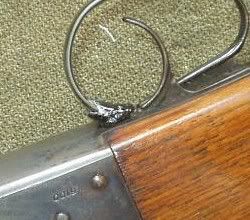 Interestingly, when he bought the gun it probably already had the trigger guard repair seen in the photo to the left. This is pretty interesting. I don't know exactly how it is broken. The Stevens guns I've seen (like my 20 gauge) have the front of the trigger guard bow screwed to the receiver. I can't see how this was attached but it is now imbedded in a wad of solder which has been painted black. If this was done before Dad bought the gun the repair certainly has held up well. Dad took it hunting for grouse, woodcock, and dove and it was moved in household goods at least 18 times!
Interestingly, when he bought the gun it probably already had the trigger guard repair seen in the photo to the left. This is pretty interesting. I don't know exactly how it is broken. The Stevens guns I've seen (like my 20 gauge) have the front of the trigger guard bow screwed to the receiver. I can't see how this was attached but it is now imbedded in a wad of solder which has been painted black. If this was done before Dad bought the gun the repair certainly has held up well. Dad took it hunting for grouse, woodcock, and dove and it was moved in household goods at least 18 times!  This photo shows the "5100" mark on the right side of the receiver.This is the model number.
This photo shows the "5100" mark on the right side of the receiver.This is the model number. You can also see that the color case has survived pretty well. I think this is remarkable because Dad told me that he shot 100s of rounds of skeet with the shotgun. Apparently this was his passion right after he got out of the service. I wonder if he got interested while stationed in Italy (1945-47). I think that all that frivolity ended when he was accepted to Syracuse University in 1949 or 1950. With all the use I would have expected more wear. in any event there was no more skeet shooting until he took me to the skeet field when I was 14, in 1969. I often say that we loaded 50,000+ shotshells for skeet but who knows how many more than those 50K. He really enjoyed himself on the range. Good times.
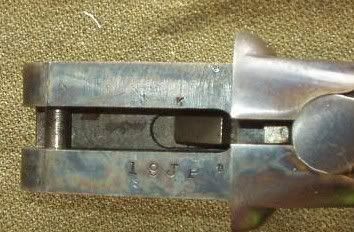 The water table is pretty much bereft of information. Only the stamp "19JP" (a serial) which I think is no more than an assembly mark. It also appears on the forearm and barrels breach. I don't know what the "K" means. The color case is very good here on this protected portion of the gun and this level of preservation is expected.
The water table is pretty much bereft of information. Only the stamp "19JP" (a serial) which I think is no more than an assembly mark. It also appears on the forearm and barrels breach. I don't know what the "K" means. The color case is very good here on this protected portion of the gun and this level of preservation is expected.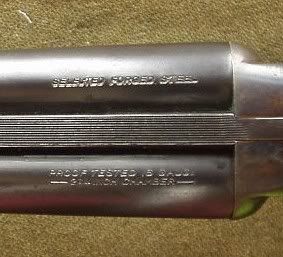 These marks on the barrels are important mainly in that it shows that the gun is chambered for the modern version of the 16 ga. shell, the 2-3/4" version. That's a real relief. Many guns have had their chambers lengthened, most with satisfactory results, but some are a bit dodgy. I'm just glad I can pick up ammo anywhere for this gun. Well, almost anywhere the 16 isn't all that popular in the US. Still, if all else fails you can get ammo on-line.
These marks on the barrels are important mainly in that it shows that the gun is chambered for the modern version of the 16 ga. shell, the 2-3/4" version. That's a real relief. Many guns have had their chambers lengthened, most with satisfactory results, but some are a bit dodgy. I'm just glad I can pick up ammo anywhere for this gun. Well, almost anywhere the 16 isn't all that popular in the US. Still, if all else fails you can get ammo on-line.  The breech marks aren't all that telling. Surprising to me is the "19JP" is here as well. Again, I don't think this is a serial but rather an assembly mark to keep all the parts for this particular shotgun together in this lot of shotguns for Tru-Test. The lump is also marked but the I think it is an incomplete stamp. It appears to be an oval with a "P" at the top but the mark fades towards the bottom (rear of the lump). There are no other marks.
The breech marks aren't all that telling. Surprising to me is the "19JP" is here as well. Again, I don't think this is a serial but rather an assembly mark to keep all the parts for this particular shotgun together in this lot of shotguns for Tru-Test. The lump is also marked but the I think it is an incomplete stamp. It appears to be an oval with a "P" at the top but the mark fades towards the bottom (rear of the lump). There are no other marks.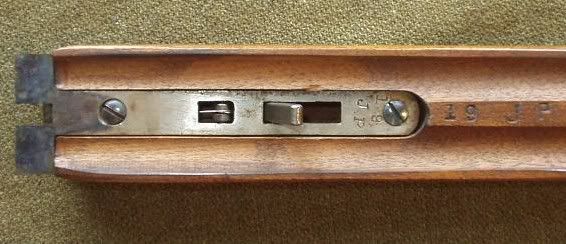 The forearm is also marked "19JP" but the mark is more spread apart which is one reason I think that this is an assembly mark rather than a serial number. The mark appears on both the wood and the iron. That is the only mark on the forearm.
The forearm is also marked "19JP" but the mark is more spread apart which is one reason I think that this is an assembly mark rather than a serial number. The mark appears on both the wood and the iron. That is the only mark on the forearm. The wood on this gun, like my 20 ga., was refinished about 1971. As I remember it the original (?) finish was a varnish and had worn away in some places. The Tru-Oil finish we gave it back then has held up very well indeed. The pistol grip is very full with a tight radius. It has a much different feel than the Stevens 20 ga.
I did an internet search for history on the Tru-Test but found nothing but other guns and my own blog. That's a bit disappointing. If anyone knows anything about the Tru-Test gun purchases or can point me to a reference book, please do so by writing me.
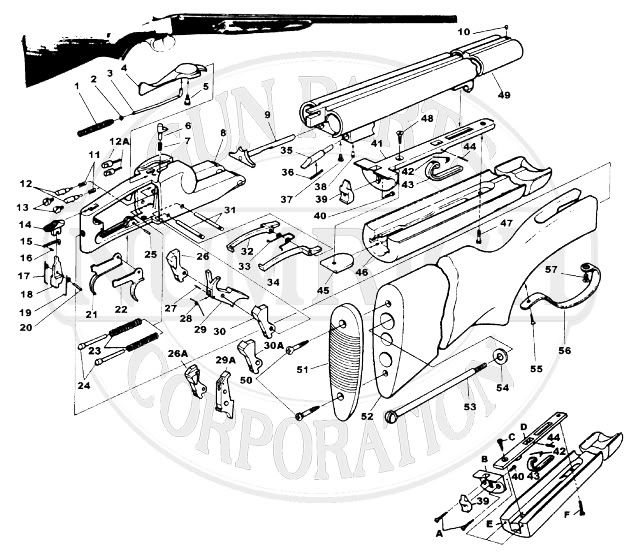



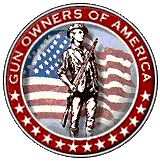







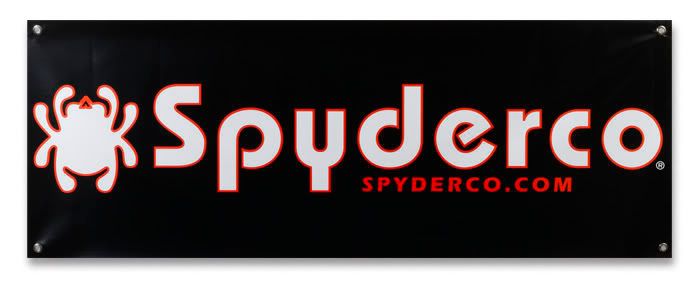










No comments:
Post a Comment